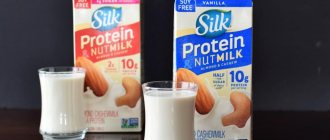Probably, in no other sphere of human activity are there as many myths and false beliefs as can be found in the field of nutrition. Most of these myths are deliberately imposed on us by food corporations, while the rest are simply misconceptions that arose due to a false interpretation of the facts. For example, in the last century there was a misconception that tuberculosis could be successfully treated by eating dog meat. It is not known for certain where and why this myth appeared, but it is quite obvious that such a “diet” is likely to do more harm than good. And even if for some reason relief occurred as a result of such a diet, this can be considered nothing more than a short-term remission. But it is precisely on such myths, many of which do not seem illogical to most people, that the modern food system is built.
The greatest number of misconceptions can be found regarding narcotic substances - alcohol, coffee, sugar, as well as products of animal origin. Why is that? The reason is simple. A lot of money is made from drugs and animal products. The former can be sold in unlimited quantities, constantly increasing sales volumes due to the formation of addiction in humans, and the latter can be very masterfully counterfeited, thereby reducing the cost of the product and increasing the percentage of net profit.
Many such myths have been created around the consumption of milk and dairy products. Today, even a child knows that milk is a source of calcium. From childhood, a child is persistently taught that if he wants to grow up and grow up healthy, he must drink milk and consume dairy products. As is often the case with most common myths (with the exception of the completely crazy ones), they are not without a certain amount of truth. For example, the popular myth that alcohol dilates blood vessels is not entirely an outright lie. It really expands blood vessels, but marketers of alcohol corporations “forget” to clarify that this happens due to the “gluing” of red blood cells into flakes, followed by clogging of brain vessels and the death of brain tissue cells. And yes, it really dilates the blood vessels.
The situation is approximately the same with the myth about saturating the body with calcium in the process of drinking milk. There really is calcium in milk - you can’t argue with that. But the problem is that milk and dairy products lower the body’s Ph, which leads to the fact that the body is forced to increase this Ph again on its own. And in the process, the body consumes huge amounts of... this very calcium. And the paradox is that when consuming dairy products, the body consumes more calcium than it receives. But, naturally, milk producers and the “research” they finance prefer to tactfully remain silent about this fact. And the consumption of milk and dairy products does not lead to the strengthening of bones and teeth, but to their gradual destruction, due to the chronic leaching of calcium from the body.
A striking example of the consequences of drinking large amounts of milk can be residents of villages and villages, where drinking milk is very popular, and dairy products are a constant component of their diet. The result is literally obvious. Residents of villages and hamlets have a very deplorable state of their teeth; with extremely rare exceptions, by the age of forty, more than half of them are lost. However, “acidification” of the body is only the tip of the iceberg. The main danger of milk is casein, a milk protein.
What is casein?
Casein is a complex, slowly digestible protein that takes a long time to digest in the body.
It is found in milk and dairy products. About 85% of milk protein is casein, the rest is whey protein. In milk, casein is in the form of calcium caseinate, a compound of casein with calcium salts. Under the influence of certain substances, the casein in milk coagulates, forming a curdled mass. For example, to produce cheese, rennin, an enzyme from the gastric juice of calves, is added to milk. To produce cottage cheese or kefir, acids are added to milk, which are produced by lactic acid bacteria.
Casein is used in the food industry, as this type of protein has a very high biological value and excellent amino acid composition. Casein and preparations based on it are used in medicine and dermatology. Surprisingly, casein is even used to make paints, resins, glues and plastics!
Long digestible protein
The athlete is primarily interested in the special properties of casein, namely, its ability to be absorbed for a long time. Casein forms a clot in the stomach and slowly releases nutrients and amino acids into the bloodstream over a long period.1
This allows you to maintain protein synthesis longer after exercise and feel fuller longer. In the following table you can visually compare the rates of protein absorption from different sources:
| Protein source | Absorption rate, g/hour |
| Whey Protein Hydrolyzate | 11-12 |
| Pork tenderloin | 10 |
| Whey Protein Isolate | 8-10 |
| Casein | 6.1 |
| Soy protein isolate | 4.1 |
| Milk protein | 3.5 |
| Pea protein | 3.5 |
| Egg white, cooked | 2.9 |
| Raw egg white | 1.3 |
As you can see, the rate of protein absorption varies quite widely - from 1.3 to 12 g per hour. At the same time, the rate of absorption of casein is somewhere in the middle. It is easy to calculate that 30 g of casein taken will be absorbed in more than five hours, while a similar portion of hydrolyzate will be absorbed in 2.5 hours. And if you mix casein in milk, the rate of absorption will slow down even more! Many protein shakes today offer a blended formula - a combination of whey protein and casein, as taking this blend has been found to produce better results than taking either supplement alone.2
What products does it contain?
Night protein is present in all dairy products. The largest amount of the substance is in goat and cow milk – 80%. In other types of lactation product it is less and the figure is 50% in:
- mare;
- sheep;
- donkey
All types of milk contain casein. What other foods contain this protein? Curd products and cheeses are rich in it. The casein content is 20% in cottage cheese, and in hard cheese – 30%. Less than 20% night protein in yogurt, kefir and other fermented milk products.
Ready-made micellar casein, which can be bought in retail chains, is isolated from whole milk. People use it as a dietary supplement for:
- systematic training in strength sports;
- heavy physical activity;
- diets aimed at weight loss.
And also on the special recommendation of a doctor in case of insufficient development of muscle mass.
For what?
Casein has a number of beneficial properties that make it an important product in sports nutrition.
May prevent muscle breakdown
A 2009 study found that eating a protein-carbohydrate meal immediately after exercise (on an empty stomach) prevents muscle protein breakdown.3
The combination of whey protein, casein protein and carbohydrate source is ideal.
Helps build muscle mass
A systematic review of the effects of protein supplements on muscle mass found that they can increase strength and muscle growth, as well as improve aerobic and anaerobic performance.4
Of course, provided that you perform weight-bearing exercises and provide sufficient stress on the muscles.
A 2012 study looked at the effects of long-term exercise combined with whey and casein supplementation on muscle mass in both young and older adults.5
It was found that this approach leads to a significant increase in muscle mass in both.
Improves recovery after training
Casein taken before bed may improve post-workout recovery. A study conducted in 2012 examined exactly this question. The study involved 16 healthy young men who followed a normal diet. They did resistance training in the evening and took either casein or a placebo before bed. The results showed that casein taken 30 minutes before bed increased the rate of protein synthesis in the subjects' bodies by 22%.6
Helps preserve muscles
When you create a large calorie deficit, rapid fat loss occurs. However, with such short-term diets, some loss of muscle mass occurs. A 2013 study by American researchers found that consuming a combination of whey protein and casein at twice the recommended dose may protect against loss of lean muscle mass during a short-term diet.7
How and when to take?
The most popular time to take casein is before bed. The arguments are quite simple - you sleep at night, and therefore you are hungry. Casein digests slowly over many hours, so if you take it before bed, it will fuel you all night long, preventing catabolism from breaking down your muscles. You can prepare a serving of casein using either water or milk. The second option is preferable if you want the cocktail to be digested for a very long time. In addition, this option will have better taste. If you are lactose intolerant, then take casein in water. The recommended serving is about 40 g of casein.
When else can you take casein? When you know for sure that you will not be able to eat natural food in the near future. Agree, this can happen to any of us at any time of the day. An excellent breakfast would be a combination of casein and instant oatmeal. This cocktail will fill you up for a long time and provide your body with proteins and carbohydrates. As a result, you can safely forget about hunger and catabolism for the next 4-5 hours.
Taking casein after training is not advisable, since easily digestible proteins are required during this period. However, this problem is solved with the help of a special form of casein, which will be discussed below.
Lactose is a healthy sugar
Many have heard this term and when asked “What is lactose?”, they will most likely answer that it is milk sugar. And they are right. Lactose is a natural sugar found in milk-based products. Its main purpose is to provide us with glucose, which is formed due to its breakdown. Also, lactose is a substrate for the development of lactobacilli, which are beneficial to our body; it facilitates the absorption of calcium, magnesium and iron, stimulates nervous regulation, plus prevents caries. Undoubtedly, lactose is a very healthy product.
Types of casein
No matter how strange it may sound, casein also comes in different forms. The most common forms are calcium caseinate and micellar casein.
Calcium caseinate
Calcium caseinate is an older form of casein. It has a thick consistency and, compared to micellar casein, foams a little more and dissolves less well. Properties such as stickiness and thickness have allowed this type of casein to occupy its niche in the food industry. Naturally, it is also used in sports nutrition, but not all athletes like it because of the thickness of the resulting drink. If you want to use it, it is recommended to add more liquid to the cocktail.
Micellar casein
This is the most common form of casein and is loved by many athletes. This type of casein does not have the disadvantages of calcium caseinate, such as excessive thickness and foaming, and it tastes a little more pleasant. In addition, micellar casein is produced without heat or acids, which helps maintain the original protein structure. Once in the gastrointestinal tract, this type of casein, under the influence of pepsin, forms micelles - dense clots, into which digestive enzymes are difficult to penetrate, therefore, such a lump will take longer to break down.
Hydrolyzed casein
And finally, the latest word in the food industry is hydrolyzed casein. This type of casein undergoes enzymatic hydrolysis, as a result of which it is absorbed faster than regular casein. This property allows you to use it immediately after training and be sure that the muscles will receive a sufficient amount of amino acids.
Where can we get it?
If you use milk (cow, goat, buffalo), kefir, fermented baked milk, yogurt, cream, butter, yogurt, sour cream, cottage cheese in your diet, you can saturate your body with lactose. It is also found in buttermilk, kumiss and whey. What about cocoa, mashed potatoes, semolina, margarine, baked goods, ice cream, condensed milk and dark chocolate? Yes, they have some lactose too! It is especially important in infancy and its need is met by mother's milk.
Side effects and combination with other supplements
As a rule, casein is not characterized by any side effects. If you suffer from lactose intolerance, then you need to be careful with casein; after all, it contains a small amount of milk sugar. If your body does not accept casein, then you need to switch to whey isolate or hydrolysate. Allergic reactions to casein can sometimes occur.
Casein goes well with other types of protein. Alternatively, you can mix whey and egg protein with casein to create a multi-component protein mixture that will be absorbed at different rates. An ideal meal replacement would be to combine this mixture with instant oatmeal.
Supplements such as creatine or vitamin-mineral complex work well with casein. But glutamine or BCAA must be taken separately. The best option is to take these amino acids first, and after 20 minutes casein.
Conclusion
Casein is a great supplement for those looking to build muscle, increase strength, maintain muscle, or lose weight. When it comes to feeling fuller longer and protein synthesis, it seems to have advantages over whey protein. However, whey also has a number of advantages that casein does not have. The most effective is considered to be a combination mixture of casein and whey protein. Whether you are an athlete, a bodybuilder, or just hit the gym twice a week, taking casein will undoubtedly help you achieve your goals.
Articles on our website are presented for educational and informational purposes only. We do not recommend using article materials as medical advice. If you decide to take dietary supplements or make fundamental changes to your diet, first consult with a specialist.
Rating of the best casein protein manufacturers
- Optimum Nutrition 100% Casein Gold Standard. American casein is a top seller and a favorite of athletes around the world. Has high biological value. Has a wide variety of flavors. The approximate cost for 1820 grams is from 2000 rubles.
- Weider Day & Night Casein. The German manufacturer took care to create high-quality casein protein with good solubility and yogurt consistency. The approximate cost for half a kilogram is from 1150 rubles.
- Dymatize Elite Casein. The product contains the most complete and most digestible amino acid composition. A serving contains 24 grams of casein protein, including as many as 10 grams of BCAA, glutamine, and calcium (half the daily value). The cost for 920 grams is about 1890 rubles.
- QNT Casein Protein. Belgian casein is the lowest calorie and economical casein among the favorites. Approximate cost for 908 grams from 2050 rubles.
- MusclePharm Casein. The supplement contains 25 grams of micellar casein per serving, as well as digestive enzymes, enzymes, and prebiotics. Provides muscles with amino acids for a long time, perfect for taking before bed. The approximate cost for 1360 grams is about 2150 rubles.











